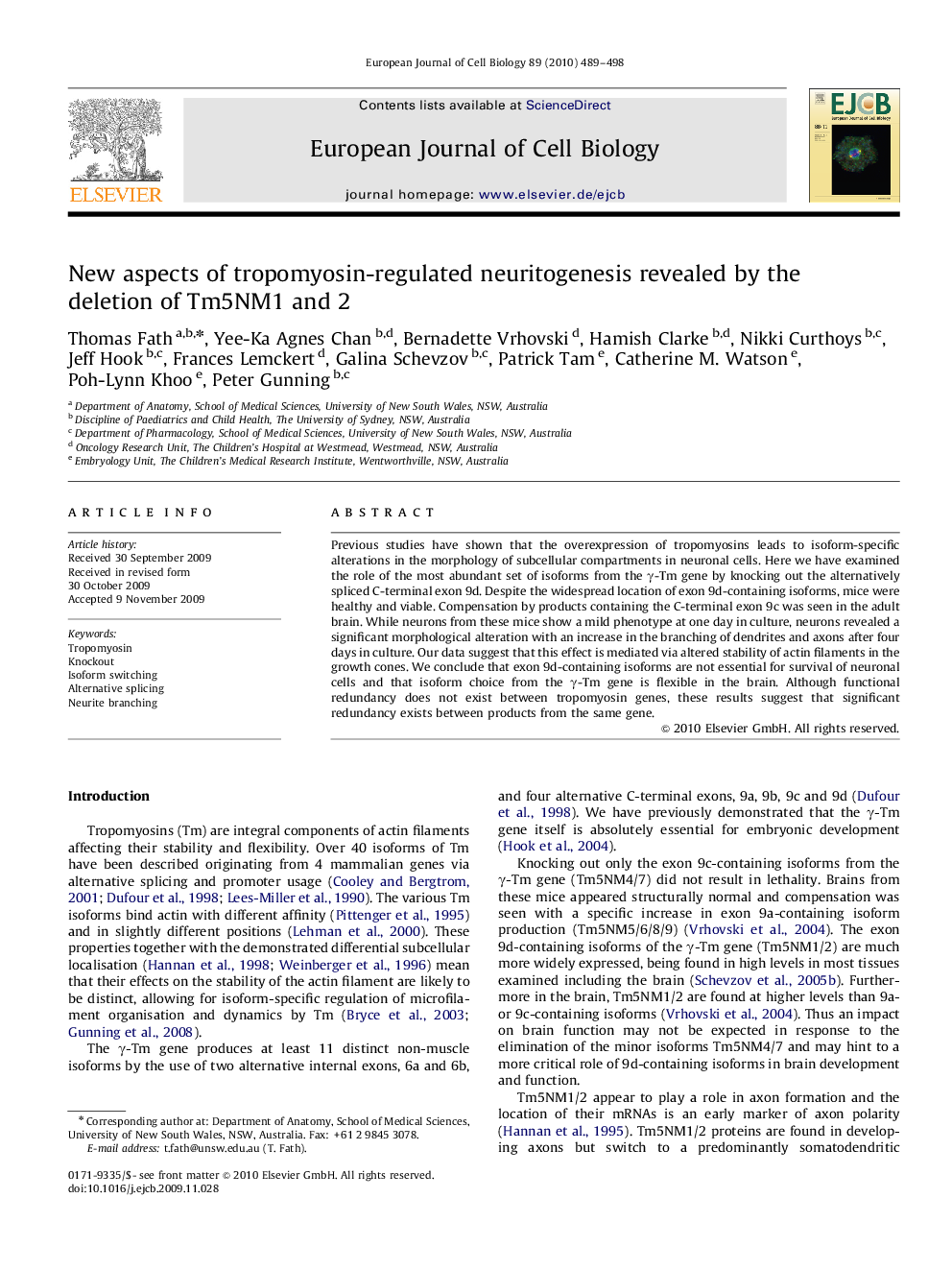| Article ID | Journal | Published Year | Pages | File Type |
|---|---|---|---|---|
| 2178752 | European Journal of Cell Biology | 2010 | 10 Pages |
Previous studies have shown that the overexpression of tropomyosins leads to isoform-specific alterations in the morphology of subcellular compartments in neuronal cells. Here we have examined the role of the most abundant set of isoforms from the γ-Tm gene by knocking out the alternatively spliced C-terminal exon 9d. Despite the widespread location of exon 9d-containing isoforms, mice were healthy and viable. Compensation by products containing the C-terminal exon 9c was seen in the adult brain. While neurons from these mice show a mild phenotype at one day in culture, neurons revealed a significant morphological alteration with an increase in the branching of dendrites and axons after four days in culture. Our data suggest that this effect is mediated via altered stability of actin filaments in the growth cones. We conclude that exon 9d-containing isoforms are not essential for survival of neuronal cells and that isoform choice from the γ-Tm gene is flexible in the brain. Although functional redundancy does not exist between tropomyosin genes, these results suggest that significant redundancy exists between products from the same gene.
